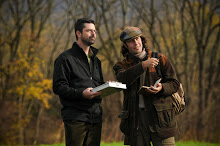It’s difficult to highlight the most interesting elements of our travels in Lithuania’s main cities, as there are so many unique elements. In the month and a half I have spent in Lithuania most of our travels have been limited to the capital city of Vilnius, though that alone has been more than enough. I noted in an earlier post that the city caught me off guard, having been exposed to the common image of ultra-modern European cities, with classical Old Town districts untouched for centuries. However, for whatever Vilnius lacks in gleaming modernity, it makes up in character and certainly has a reasonable explanation for being rough around the edges.
As short a time ago as the year after I was born, this small Central European republic was occupied by the oppressive military power and economic influence of the mighty Soviet Union. But in 1991, the citizens caught wind of the imminent collapse of their overlords, and rumblings for independence began to be felt. Unfortunately, those tremors were replaced by the thunder of Soviet tanks in the streets and battles for control of the airwaves and the Seimas, or Lithuanian House of Parliament. After a series of confrontations between Soviet forces and freedom fighters, the TV Tower, a dominating spire of the modern skyline reminiscent of Toronto’s CN tower, was taken back for a time by the occupying Soviets and used to broadcast propaganda. But the Seimas held strong.
In an interesting twist regarding the crumbling of the Iron Curtain, the concrete barricades in Vilnius were not symbols of oppression and division as they were in Berlin, they were quite the opposite: symbols of strength and independence. Most of the activities of the Lithuanian Parliament take place in a newer building, with the original serving mostly symbolic purposes. The interior is no longer fortified with sandbags and machine gun nests, nor do concrete barricades, strings of barbed wire, or anti-tank obstacles encircle the grounds, but off to one side a small display preserves a few of these artifacts and commemorates the history of oppression under the Soviet Union. But most notably, the docent of this small exhibit is a man whose name is still recognized in Lithuania today. Jonas Gečas was the man responsible for the defense of the Seimas during the uprising of 1991. Considering the disporportionate size of the beligerents, his accomplishment might be compared with that of Jim Bouie, had the Alamo withstood the Mexican assault. Since that time he served as a consultant and observer in conflicts around the world, including the Balkans and most recently, Afghanistan. Before we left, he generously gave me a book entitled “Faces, a photo essay of the members of the Lithuanian military. This book is furthermore a limited edition print, 1 of 1000 published to commemorate the 600th anniversary of the Lithuanian triumph at the Battle of Grunwald. Needless to say, it will take a special place in my library.
No longer do the streets quake with armored vehicles of an occupying military force, and the nation has made considerable progress since those days. With admittance to the European Union, the nation’s economy grew by leaps and bounds until the recession hit. The country is still recovering from the global crisis and emmigration, citzens leaving the country to work else where, is a growing issue. With few good jobs to be had, a college graduate‘s best employment prospect might only be stocking shelves at Maxima, the national equivalent of Wal-Mart. As a positive sign, there are construction projects everywhere, emblazoned with the Blue and Gold of the European Union, but there is still a long way to go.
For example, storm water run-off is a significant issue, with only a moderate rain threatening to flood a few significant thoroughfares in the city. As a sign of the age of the streets, the pavement in the city is very distinctly rutted with the tracks of automobile traffic and the buses, which fill with water in rain and produce unpleasant puddles. However, many of the older regions of the city have brick or cobblestone pavement, which is quite classic and effective.
After a month and a half here, it is becoming apparent that I won’t have time to fit everything in here that I wanted to do, despite being extremely efficient in seeing many of the sights and experiences this corner of the world has to offer. Fortunately, we plan to return in the not-too-distant future, so there will be time then for visiting the Television Tower, the inside of Trakai, and maybe even my far-fetched idea of taking a train to Northern Lithuania and walking up to the Latvian Border. That is all for now, as I write this on a tour bus bouncing through Poland (and yes I mean bouncing, the roads can be atrocious) and my battery is about to die.

No comments:
Post a Comment